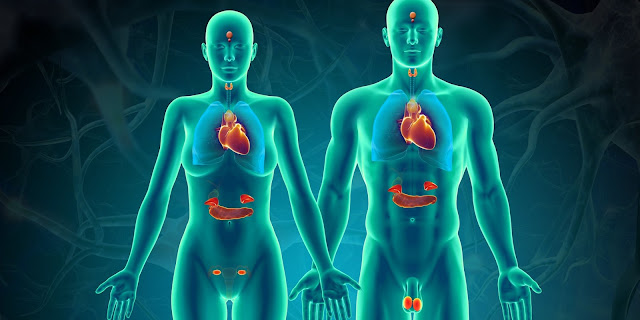Visual Arts Therapy: Healing Power of Creativity
Art has a unique ability to heal, comfort and empower. Visual arts therapy harnesses this therapeutic power of creativity to help individuals recover from illness, relieve stress and improve overall well-being. Through creative exploration and self-expression, this evidence-based approach provides meaningful benefits for both physical and mental health.
What is Visual Arts Therapy?
Visual arts therapy, also known as art therapy, is a form of complementary
therapy that uses art media such as drawing, painting, sculpture and other
artforms as a means of communication. In a therapeutic setting, clients work on
visual art projects under the guidance of a qualified art therapist. The creative
process and resulting pieces are used to explore memories, emotions and
experiences.
The goal of Visual
Arts Therapy is to improve cognitive and sensory-motor functions,
foster self-esteem, cultivate emotional resilience and promote overall wellness.
It can be an effective treatment option for conditions such as depression,
anxiety, trauma, addiction, chronic illness and developmental delays. The
therapy does not require prior artistic training or skills. The creative
process itself provides relief and insight.
How Does it Work?
An art therapy session usually starts with open-ended exploration using
different art materials like crayons, markers, paint and papier-mâché. Clients
are encouraged to intuitively respond to prompts or freely express themselves
through imagery and symbols. The art therapist observes the creative process
and resulting artwork to gauge the client's emotional state, detect patterns
and themes.
Through guided discussion, the therapist helps the client gain awareness about
what they created and how it relates to their thoughts, feelings and
experiences. This externalization of internal experiences cultivates
self-understanding and provides new perspectives. Unlike traditional talk
therapy, visual expression allows clients to communicate non-verbally which is
especially helpful for those impacted by trauma or with difficulty verbalizing.
Benefits of Visual Arts Therapy
Reduces Stress and Anxiety: The creative and engaging nature of art-making
triggers the body's relaxation response. It provides an outlet for pent up
emotions and a distraction from worries and ruminating thoughts.
Improved Mood: Creating and viewing art activates pleasure centers in the brain
releasing feel-good neurotransmitters like endorphins and serotonin. The
experience gives a sense of achievement and competence that boosts self-esteem
and confidence.
Physical Healing: The tactile process of art-making stimulates different areas
of the brain helping restore cognitive functions impacted by conditions like dementia
or head injuries. It can also have pain-relieving effects.
Emotional Insight: Externalizing inner experiences through imagery provides a
new perspective allowing clients to gain awareness about unresolved issues,
patterns of behavior and relationships.
Self-Expression: Art allows symbolic communication for those unable to express
themselves verbally due to lack of language proficiency or from trauma.
Non-verbal expression cultivates self-awareness.
Socialization: Group art therapy fosters connection and a sense of belonging
providing emotional support especially useful for isolation, loneliness or
social anxiety.
Who Benefits from Visual Arts Therapy?
Individuals from all ages dealing with a range of conditions can benefit from
visual arts therapy. Some specific groups that commonly receive art therapy
include:
- Patients with mental illnesses like depression, bipolar disorder,
schizophrenia and PTSD.
- Individuals recovering from trauma, abuse or grief due to loss.
- People with physical illnesses and disabilities experiencing reduced mobility
or chronic pain.
- Children and adolescents struggling with developmental, behavioral or
social-emotional issues.
- Patients undergoing difficult medical procedures like cancer treatment
requiring painful surgeries.
- Veterans processing combat experiences or living with post-war mental health
issues.
- Seniors with declining cognition facing illnesses like dementia or
Alzheimer's.
- Individuals dealing with substance abuse or addiction recovery programs.
- Prison inmates as a means of rehabilitation and to curb violence or criminal
behaviors.
In summary, the creative and expressive nature of visual arts therapy has the
potential to benefit a wide spectrum of individuals regardless of age, background
or condition seeking relief, understanding and personal growth. When practiced
under the guidance of a qualified art therapist, it provides meaningful
clinical improvements to physical, cognitive and emotional wellness.
Qualifications of an Art Therapist
For visual arts therapy to have its intended clinical benefit, it's important
it's administered by a licensed and experienced art therapist. Here are the
typical educational and training requirements to become one:
- A minimum of a master's degree in art therapy, counseling, psychology or
social work from an accredited institution.
- Completion of supervised clinical hours including a long-term internship in
an approved mental health setting.
- National certification through the Art Therapy Credentials Board requiring
passing the board exam.
- Adherence to ethical codes focusing on client safety, confidentiality and
informed consent.
- State licenses for independent practice through various state regulatory
boards.
- Ongoing continuing education and training to keep up with evolving research
and best practices.
With specialized training to understand human psychology and the clinical
applications of art, a certified art therapist can expertly guide clients
through the creative process and help leverage its healing properties. Their
supportive presence during creative expression and interpretation of visual
symbols assists meaningful resolution and personal growth.
In conclusion, visual arts therapy is a powerful evidence-based treatment modality
that taps into humanity's innate need for creative expression and non-verbal
communication. When administered properly by qualified professionals, it
provides relief from stress while cultivating emotional resilience and
wellness. When combined with traditional therapies, it has much potential to
improve lives impacted by illness, trauma and life challenges.
Get
more insights on this topic:
https://www.insightprobing.com/visual-arts-therapy-a-holistic-approach-to-healing/




Comments
Post a Comment